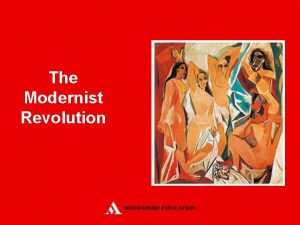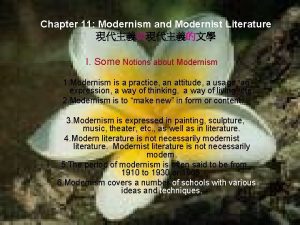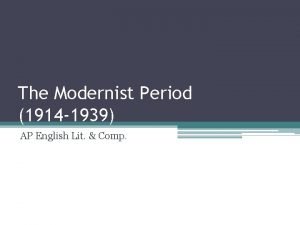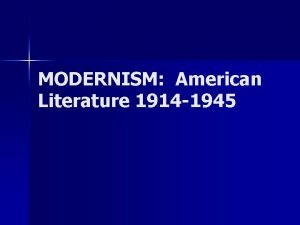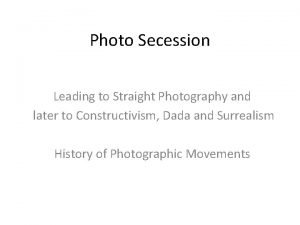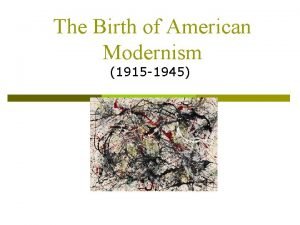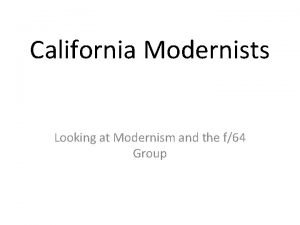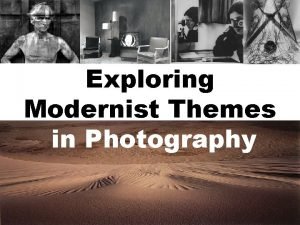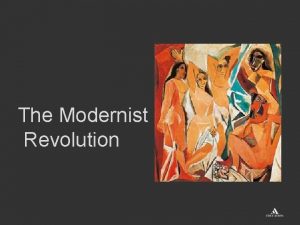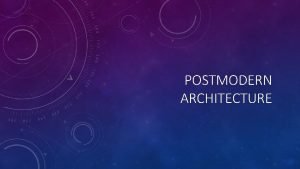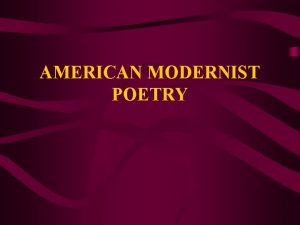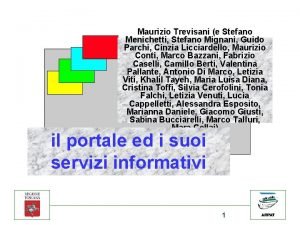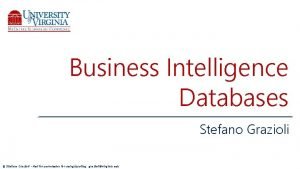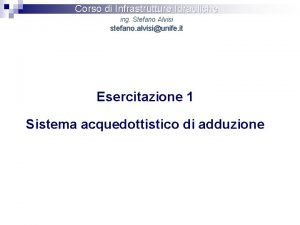The Modernist Revolution Cisilino Stefano The Modernist Revolution







- Slides: 7

The Modernist Revolution Cisilino Stefano

The Modernist Revolution In the first decade of the 20° century all of the forms of art were influenced by the new theories developed by Sigmund Freud in psychology, Albert Einstein in physic, and Henry Bergson.

The new theories Sigmund Freud: Drew attention to the significance of unconscious processes and the demands of libido. He analyzed also the power of unconscious and how it influences the human behaviour. Albert Einstein: published the “Theory of Relativity” in General Theory of Relativity: time and space are subjective dimensions. The theory compromised the idea of an objective reality. So science acquired a hypothetical nature. Henry Bergson: he changed the idea of time. He distinguished two kind of time: a time influenced by the idea of space and therefore it’s a flow of chronological events and a consciousness time where present, past an future exist at the same time.

The modernist revolution in literature With the crisis of the idea of an objective reality, there was no set of values to which modernist writers could refer to. The consequences are: characters speak for themselves without any narrator’s interviewing to offer the reader an alternative point of view; the subjective is more important than objectivity. Therefore writers developed new narrative technique to better represent the characters’ interiority. Examples are the new narrative techniques developed by James Joyce and Virginia Woolf.

James Joyce - Virginia Woolf (1882 – 1941) New narrative technique used by J. Joyce and Virginia Woolf: Stream of conscious Representation of the thoughts as they come to the mind without logical order. Epiphany Moment when an object, a person or an event reveals the true mean of life. Mythic method Organising principle of the Ulysses. Joyce use it to compare the main character Leopold with Ulysses and therefore Joyce compare the modernist society with society of the past.

James Joyce - Virginia Woolf (1882 – 1941) Interior Monologue Interior dialogue of the character to himself Use of different semantic field To underline the relationship between the objects and the facts

Literature Modernism vs Victorian Age Modernism Absolute view of reality Variety of points of view and of reality More attention to the events More attention to feelings Omniscient and external narrator First person narrator Realism/Objectivity Subjectivity Chronological time Relative time (coexisting of present and past) Objective space The space reflects the interior crisis Dialogue Interior monologue and stream of consciousness Plot The plot doesn’t exist
